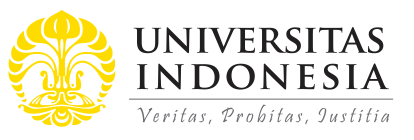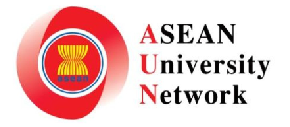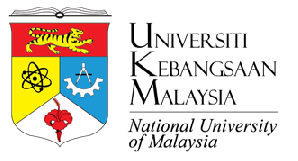
Abstract
A large number of geological studies have shown that most of the Asian regions are prone to earthquake risks, and this is particularly significant in SE Asia. The tectonics of this region allow the geological investigators to argue for severe vulnerability to major and devastating earthquakes in the near future. This remind us of the devastations of Nepal in 2015, of Japan in 2011, and significant destruction of life and property at Acehnese and Thai coasts in 2004, and of Kashmir and New Orleans in 2005. Such example of destructions could be minimized to a greater extent if proper scientific and administrative framework is established. This was surely lacking in most of the above examples. And previous studies have suggested that scientists and administrative authorities should work together, and map the actual vulnerabilities on ground, and simultaneously educate people about the probable causes of earthquakes and how to minimize the destruction. Here we further show that nations with a turbulence political past, and an ongoing unstable political problem are more likely to score less on securing its people from disasters. And this score can significantly deteriorate if a nation does not work on eradication of corruption. Because corruption can make monsters out of ordinary disasters. We further show that South and South East Asian region are relatively young nations that are still in post-colonial period, and are largely involved in strengthening of their economies, and cleaning of the post-colonial problems. The increasing values of gross domestic product (GPD) per capita and a decent rise in literacy rates are a good news to win battle with disasters, however, these nations have to work really hard to eradicate corruption, and spend more on scientific research and awareness about earthquake disasters.
References
Acharya, A. (2009). The Maoist insurgency and the political economy of violence. The Maoist Insurgency in Nepal: Revolution in the Twenty-first Century, 20, 263.
Alesina, A., Özler, S., Roubini, N., & Swagel, P. (1996). Political instability and economic growth. Journal of Economic growth, 1(2), 189-211.
Ambraseys, N., & Bilham, R. (2011). Corruption kills. Nature, 469(7329), 153.
Ambraseys, N., & Bilham, R. (2000). A note on the Kangra M s= 7.8 earthquake of 4 April 1905. Current Science, 79(1), 45-50.
Avouac, J. P., Meng, L., Wei, S., Wang, T., & Ampuero, J. P. (2015). Lower edge of locked Main Himalayan Thrust unzipped by the 2015 Gorkha earthquake. Nature Geoscience, 8(9), 708.
Bilham, R., Gaur, V. K., & Molnar, P. (2001). Himalayan seismic hazard. Science, 293(5534), 1442-1444.
Bilham, R., Bodin, P., & Jackson, M. (1995). Entertaining a great earthquake in western Nepal: historic inactivity and geodetic tests for the present state of strain. Journal of Nepal Geological Society, 11(1), 73-78.
Bari, M. S., & Das, T. (2013). A Comparative Study on Seismic Analysis of Bangladesh National Building Code (BNBC) with Other Building Codes. Journal of The Institution of Engineers (India): Series A, 94(3), 131-137.
Banu, R., & Sussex, R. (2001). English in Bangladesh after independence: Dynamics of policy and practice. 122-147.
Bendick, R., Bilham, R., Fielding, E., Gaur, V. K., Hough, S. E., Kier, G., ... & Mukul, M. (2001). The 26 January 2001 “Republic Day” earthquake, India. Seismological Research Letters, 72(3), 328-335.
Chaulagain, H., Rodrigues, H., Silva, V., Spacone, E., & Varum, H. (2015). Seismic risk assessment and hazard mapping in Nepal. Natural Hazards, 78(1), 583-602.
Chan, A. (2005). The Development of a Muslim Enclave in Arakan (Rakhine) State of Burma (Myanmar). SOAS Bulletin of Burma Research, 3(2), 396-420.
Chung-Hn Chan., Yu Wang., Xuhua Shi., Teraphan Ornthammarath., Pennung Warnitchai., Suwith Kosuwan., Myo Thant., Phuong Hong Nguyen., Le Minh Nguyen., Renato U Solidum Jr., Masyhur Irsyam., Sri Hidayati, & Kerry Sieh (2017). Toward uniform probabilistic seismic hazard assessments for Southeast Asia. American
Crowley, K., & Elliott, J. R. (2012). Earthquake disasters and resilience in the global North: lessons from New Zealand and Japan. The Geographical Journal, 178(3), 208-215.
Cummins, P. R. (2017). Geohazards in Indonesia: Earth science for disaster risk reduction–introduction. Geological Society, London, Special Publications, 441(1), 1-7. Geophysical Union-245.
DesRoches, R., Comerio, M., Eberhard, M., Mooney, W., & Rix, G.J. (2011). Overview of the 2010 Haiti earthquake. Earthquake Spectra, 27(S1), S1-S21.
Dixit, A. M., Yatabe, R., Dahal, R. K., & Bhandary, N. P. (2013). Initiatives for earthquake disaster risk management in the Kathmandu Valley. Natural hazards, 69(1), 631-654.
Dominey-Howes, D., Cummins, P., & Burbidge, D. (2007). Historic records of teletsunami in the Indian Ocean and insights from numerical modelling. Natural Hazards, 42(1), 1-17.
Forand, D., Evans, J. P., Janecke, S. U., & Jacobs, J. (2018). Insights into fault processes and the geometry of the San Andreas fault system: Analysis of core from the deep drill hole at Cajon Pass, California. GSA Bulletin, 130(1-2), 64-92.
Genrich, J. F., Bock, Y., McCaffrey, R., Prawirodirdjo, L., Stevens, C. W., Puntodewo, S. S. O., ... & Wdowinski, S. (2000). Distribution of slip at the northern Sumatran fault system. Journal of Geophysical Research: Solid Earth, 105(B12), 28327-28341.
Hall, R., van Hattum, M. W., & Spakman, W. (2008). Impact of India–Asia collision on SE Asia: the record in Borneo. Tectonophysics, 451(1-4), 366-389.
Hee, M.C., Lam, N.T.K., Tsang, H.H. and Looi, D.T.W. 2015. Draft National Annex to Eurocode 8 for Malaysia and cost implication for residential buildings with thin size elements. Proceedings of the Tenth Pacific Conference on Earthquake Engineering Building an Earthquake-Resilient Pacific, 6-8 November 2015, Sydney, Australia. Australian Earthquake Engineering Society.
Hough, S. E. (2010). Predicting the Unpredictable: The Tumultuous Science of Earthquake Prediction. 272 pp.
Jain, S.K., 2016. Earthquake safety in India: achievements, challenges and opportunities. Bulletin of Earthquake Engineering, 14(5), pp.1337-1436.
Jankaew, K., Atwater, B. F., Sawai, Y., Choowong, M., Charoentitirat, T., Martin, M. E., & Prendergast, A. (2008). Medieval forewarning of the 2004 Indian Ocean tsunami in Thailand. Nature, 455(7217), 1228.
Juwono, V. (2016). Berantas Korupsi: a political history of governance reform and anti-corruption initiatives in Indonesia 1945-2014 (Doctoral dissertation, The London School of Economics and Political Science (LSE).
Kumar, S., Wesnousky, S. G., Rockwell, T. K., Ragona, D., Thakur, V. C., & Seitz, G. G. (2001). Earthquake recurrence and rupture dynamics of Himalayan Frontal Thrust, India. Science, 294(5550), 2328-2331. Le Fort, P. (1975). Himalayas: the collided range. Present knowledge of the continental arc. American Journal of Science, 275(1), 1-44.
Liu, P. L. F., Lynett, P., Fernando, H., Jaffe, B. E., Fritz, H., Higman, B., & Synolakis, C. (2005). Observations by the international tsunami survey team in Sri Lanka. Science, 308(5728), 1595-1595.
MacRae, G. A., Myint, U. T., & Jain, S. K. (2011). Steps in Earthquake Proofing a Country—A Case Study of Myanmar. Bulletin of the New Zealand Society for Earthquake Engineering, 44(2), 87.
Malik, J. N., Sahoo, A. K., Shah, A. A., Shinde, D. P., Juyal, N., & Singhvi, A. K. (2010). Paleoseismic evidence from trench investigation along Hajipur fault, Himalayan Frontal Thrust, NW Himalaya: implications of the faulting pattern on landscape evolution and seismic hazard. Journal of structural geology, 32(3), 350-361.
Malik, J. N., Sahoo, S., Satuluri, S., & Okumura, K. (2015). Active fault and paleoseismic studies in Kangra valley: Evidence of surface rupture of a great Himalayan 1905 Kangra earthquake (M w 7.8), Northwest Himalaya, India. Bulletin of the Seismological Society of America, 105(5), 2325-2342.
Malik, J. N., Shah, A. A., Naik, S. P., Sahoo, S., Okumura, K., & Patra, N. R. (2014). Active fault study along foothill zone of Kumaun Sub-Himalaya: influence on landscape shaping and drainage evolution. Current Science, 229-236.
Malik, J. N., Sahoo, A. K., Shah, A. A., Rawat, A., & Chaturvedi, A. (2007). Farthest Recorded Liquefaction Around Jammu Caused by 8 October, 2005 Muzaffarabad Earthquake of Mw= 7.6. JOURNAL-GEOLOGICAL SOCIETY OF INDIA, 69(1), 39.
Max Roser (2018) - "Economic Growth". Published online at OurWorldInData.org. Retrieved on 26th February from: 'https://ourworldindata.org/economic-growth' [Online Resource] Max Roser and Esteban Ortiz-Ospina (2018) - "Literacy". Published online at OurWorldInData.org. Retrieved on 26th February from: https://ourworldindata.org/literacy' [Online Resource]
Natawidjaja, D. H. (2018). Updating active fault maps and sliprates along the Sumatran Fault Zone, Indonesia. In IOP Conference Series: Earth and Environmental Science (Vol. 118, No. 1, p. 012001). IOP Publishing.
Nakata, T. (1989). Active faults of the Himalaya of India and Nepal. Geological Society of America Special Paper, 232, 243-264.
Naseer, A., Khan, A. N., Hussain, Z., & Ali, Q. (2010). Observed seismic behavior of buildings in northern Pakistan during the 2005 Kashmir earthquake. Earthquake Spectra, 26(2), 425-449.
NOAA Satellite and Information Service, National Environmental Satellite, Data, and Information Service. (2002) Retrieved on 26th February 2018, from https://maps.ngdc.noaa.gov/viewers/hazards/?layers=2&extent=-180,70,180,-70
Parajuli, Y. K., Bothara, J. K., Dixit, A. M., Pradhan, J. P., & Sharpe, R. D. (2000, January). Nepal Building Code-Need, Development Philosophy and Means of Implementation. In 12th World Conference on Earthquake Engineering, Auckland, New Zealand, January.
Pathier, E., Fielding, E. J., Wright, T. J., Walker, R., Parsons, B. E., & Hensley, S. (2006). Displacement field and slip distribution of the 2005 Kashmir earthquake from SAR imagery. Geophysical Research Letters, 33(20).
Paton, D., Bajek, R., Okada, N., & McIvor, D. (2010). Predicting community earthquake preparedness: a cross-cultural comparison of Japan and New Zealand. Natural Hazards, 54(3), 765-781.
Philibosian, B., Sieh, K., Avouac, J. P., Natawidjaja, D. H., Chiang, H. W., Wu, C. C., ... & Lu, Y. (2017). Earthquake supercycles on the Mentawai segment of the Sunda megathrust in the seventeenth century and earlier. Journal of Geophysical Research: Solid Earth, 122(1), 642-676.
Quittmeyer, R. C., & Jacob, K. H. (1979). Historical and modern seismicity of Pakistan, Afghanistan, northwestern India, and southeastern Iran. Bulletin of the Seismological Society of America, 69(3), 773-823.
Robert Simmon, NASA's Earth Observatory, based on data provided by the Socioeconomic Data and Applications Center (SEDAC), Columbia University. Retrieved on 28th February 2018, from https://neo.sci.gsfc.nasa.gov/view.php?datasetId=SEDAC_POP
Sapkota, S. N., Bollinger, L., Klinger, Y., Tapponnier, P., Gaudemer, Y., & Tiwari, D. (2013). Primary surface ruptures of the great Himalayan earthquakes in 1934 and 1255. Nature Geoscience, 6(1), 71.
Sapin, F., Pubellier, M., Lahfid, A., Janots, D., Aubourg, C., & Ringenbach, J. C. (2011). Onshore record of the subduction of a crustal salient: example of the NW Borneo Wedge. Terra Nova, 23(4), 232-240.
Shah, A. A., Zhafri, M. N., Delson, J., & Navakanesh, B. (2018). Major Strike-Slip Faults Identified Using Satellite Data in Central Borneo, SE Asia. Geosciences, 8, 156.
Shah, A. A. (2013). Earthquake geology of Kashmir Basin and its implications for future large earthquakes. International Journal of Earth Sciences, 102(7), 1957-1966.
Shah, A.A. (2015). Understanding the recent Sabah Earthquake, and other seismogenic sources in North West Borneo. Scientific Malaysia, 11, 7-10.
Shah, A. A. (2013a). Megathrust earthquakes and the associated volcanic subsidence. Current Science, 105(5), 567-567. Shah, A. A. (2014). Predicting the Unpredictable: The Tumultuous Science of Earthquake Prediction. Geosciences Journal, 18, 373-374.
Shearer, P., & Bürgmann, R. (2010). Lessons learned from the 2004 Sumatra-Andaman megathrust rupture. Annual Review of Earth and Planetary Sciences, 38.
Sieh, K., & Natawidjaja, D. (2000). Neotectonics of the Sumatran fault, Indonesia. Journal of Geophysical Research: Solid Earth, 105(B12), 28295-28326.
Sieh, K. (2007). The Sunda megathrust—past, present and future. Journal of Earthquake and Tsunami, 1(01), 1-19.
Sloan, R. A., Elliott, J. R., Searle, M. P., & Morley, C. K. (2017). Active tectonics of Myanmar and the Andaman Sea. Geological Society, London, Memoirs, 48(1), 19-52.
Stone, R. (2011). A Bengali recipe for disaster. Science, 332(6035), 1256-1258.
Stivens, M. (2010, July). Religion, nation and mother-love: The Malay Peninsula past and present. In Women's Studies International Forum (Vol. 33, No. 4, pp. 390-401). Pergamon.
Takai N, Shigefuji M., Rajaure S., Bijukchhen S., Ichiyanagi M., Megh Raj Dhital MR, Sasatani T (2016) Strong ground motion in the Kathmandu Valley during the 2015 Gorkha, Nepal, earthquake Earth, Planets and Space, 68:10.
Talbot, I., & Singh, G. (2009). The partition of India. Cambridge: Cambridge University Press
Taylor, M., & Yin, A. (2009). Active structures of the Himalayan-Tibetan orogen and their relationships to earthquake distribution, contemporary strain field, and Cenozoic volcanism. Geosphere, 5(3), 199-214.
Taylor, R. H. (2007). British Policy towards Myanmar and the Creation of the “Burma Problem,”. Myanmar: State, Society and Ethnicity, 70-95.
Thapa, D., & Sijapati, B. (2004). A kingdom under siege: Nepal's Maoist insurgency, 1996 to 2003. Zed books.
Transparency International. (2018). Retrieved at 3rd March 2018, from the website: https://www.transparency.org/news/feature/corruption_perceptions_index_2016
Wang, Y., Sieh, K., Tun, S. T., Lai, K. Y., & Myint, T. (2014). Active tectonics and earthquake potential of the Myanmar region. Journal of Geophysical Research: Solid Earth, 119(4), 3767-3822.
Wang, Y., Wei, S., Wang, X., Lindsey, E. O., Tongkul, F., Tapponnier, P., & Sieh, K. (2017). The 2015 M w 6.0 Mt. Kinabalu earthquake: an infrequent fault rupture within the Crocker fault system of East Malaysia. Geoscience Letters, 4(1), 6.
World Bank. (2018). GDP growth (annual %). Retrieved on 3rd March 2018 from https://data.worldbank.org/indicator/NY.GDP.MKTP.KD.ZG?type=shaded&view=map&year=2016
Recommended Citation
Shah, Afroz Ahmad; Qadri, Talha; and Khwaja, Sheeba
(2018).
Living with earthquake hazards in South and South East Asia.
ASEAN Journal of Community Engagement, 2(1).
Available at: https://doi.org/10.7454/ajce.v2i1.105








